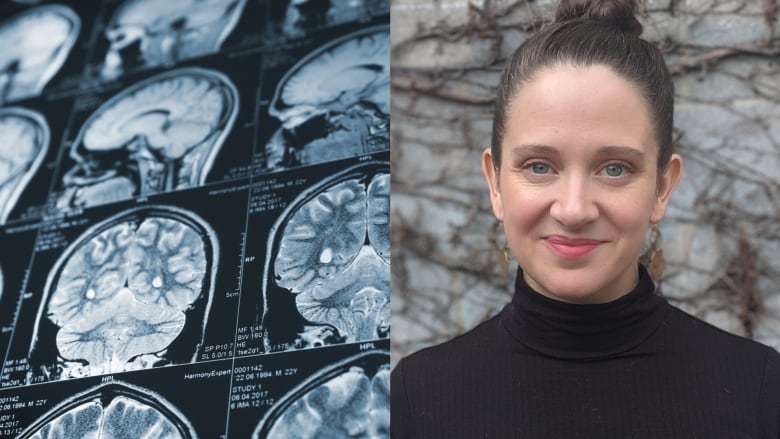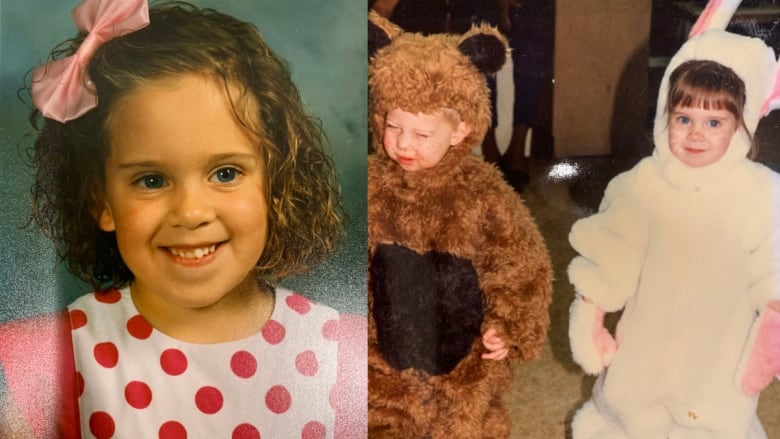I was diagnosed with ADHD as an adult. Now I realize how misunderstood this condition is
Women, girls and people of colour are often overlooked for ADHD diagnoses


This First Person article is the experience of Allie Jaynes, a CBC producer who was diagnosed with attention deficit hyperactivity disorder. For more information about CBC's First Person stories, please see the FAQ.
Last summer, I learned something that suddenly made my entire life make sense: I was diagnosed with attention deficit hyperactivity disorder (ADHD).
At 36 years old, this was a revelation. The lifetime of chaotic "quirks" that I never seemed to be able to get a handle on — the extreme absent-mindedness, the disorganization, the way it takes me so much longer than most people to finish tasks — suddenly had an explanation.
That explanation led me to get help, and to understand that the challenges that have caused me so much shame and anxiety aren't character flaws — they're my brain wiring.
I wish I had known all of this a lot sooner.
My own diagnosis made me realize how pervasive the myths about ADHD still are — and how those myths may be stopping other people from getting the diagnoses, treatment and acceptance they need.
Not just hyperactive, young, white boys
The classic picture most people have of ADHD is of a troublemaking little boy who can't sit still, probably does poorly in school, and explodes in fits of rage.
I don't fit that image at all. I was often an honour-roll student, I've learned five languages, and I've helped start two fairly successful digital media outlets.

But my absent-mindedness and disorganization have also caused me big problems. I was fired from multiple jobs in my early 20s. I've been blacklisted by a phone company for forgetting to pay my bill so many times. I've lost my wallet and passport more times than I can count.
And I've developed major anxiety trying to keep up at work, putting in extra hours and doing whatever I can to make sure no one finds out about my "problems."
That's a classic ADHD story for many women and people assigned female at birth, says Sari Solden, a psychotherapist and the author of several books, including the groundbreaking Women with Attention Deficit Disorder.
"The girls who get missed are the ones that are people pleasers, and are having all these difficulties internally, trying to clean their room, trying to stay organized, trying to meet expectations," she tells me.
"And nobody sees on the outside what they're going through."
What I didn't realize for all those years was that I have a classic case of what's now recognized as the inattentive presentation of ADHD: daydreaming, messiness, poor organization skills, forgetfulness and losing things.

Since people with these symptoms aren't disruptive or causing problems, they often get missed.
And for reasons that are still unclear to researchers, girls and women are more likely to have the inattentive, rather than the hyperactive, presentation. (There's also a third presentation — a combination of both.)
Trans and non-binary people have ADHD too, of course, but studies on this topic still haven't captured their specific experiences in the data. However, research does suggest that social norms (and not just biology) play some role in these ADHD gender differences.
What we do know is that more and more women are now getting the diagnoses they never got as children. Data from the U.S. Centers for Disease Control and Prevention tracked a four-fold increase in women filling a prescription for ADHD medication between 2003 and 2015. CDC data also shows that ADHD diagnoses in girls in the U.S. more than doubled from 1997 to 2016. The increase in diagnoses for boys was about half that.
But it's not just gender that is keeping people from getting diagnosed. You're also less likely to get diagnosed if you're racialized.
A 2013 study of more than 17,000 children in the U.S. found that Latino kids were 50 per cent less likely to be diagnosed with ADHD than white kids, and Black kids were 69 per cent less likely. This, despite evidence that kids show ADHD symptoms at the same rates across racial and ethnic groups.
ADHD is real — and genetic
The mere existence of ADHD is often seen as a controversial concept. Many people still believe that it's just an excuse for laziness, or an invention by pharmaceutical companies, or simply the result of watching too much TV or eating too much sugar.
But the science is clear: ADHD is a very real neurodevelopmental condition, and it has a lot to do with genetics.
"The evidence is overwhelming that our genome plays an important role in causing ADHD. The data go back four decades," says Steve Faraone, a professor at SUNY Upstate Medical University.
Scientists around the world — including Faraone — have conducted more than 30 studies on twins, suggesting that the heritability of ADHD is about 75 per cent.
More recently, he and a large team of international researchers looked at the whole genome of about 55,000 people and identified specific genetic variants that increase a person's chances of developing ADHD.
Researchers hope this will help destigmatize the condition and prove that it's real.
Faraone also wants to dispel the myth that ADHD is a cultural construct, pointing to solid epidemiological evidence from around the world.
"It's not, as some people like to argue, an American invention — not at all," he says. "It's everywhere."
ADHD can also be a good thing
Part of the stigma surrounding ADHD is due to the fact that it's often framed as a flaw or deficiency — which is unfortunate, because I've discovered that this kind of brain wiring actually comes with a lot of gifts.
For example, studies have found that people with ADHD tend to be highly creative thinkers, who may find new ways of approaching a problem that others hadn't thought of.

"The difficulty with compartmentalization can also lead to more fluidity, and connection between ideas, and creativity and risk taking," Solden tells me.
And because people with ADHD have what some experts call an "interest-based nervous system," we can become extremely passionate about learning every possible fact about a topic or idea we're interested in.
For a journalist like me, that's a pretty useful skill.
Society wasn't built to accommodate our ways of thinking and behaving.- CBC producer Allie Jaynes
There's no question that having ADHD can be extremely difficult, and diagnosis and treatment can be life-changing.
But I'm also sympathetic to the growing neurodiversity movement, which calls for conditions like ADHD and autism to be seen not as deficiencies, but as simply neurological variations with their own gifts and challenges.
At the end of the day, so much of what makes life hard for neurodivergent people has nothing to do with us — it's that society wasn't built to accommodate our ways of thinking and behaving.
And my hope is that the more the myths and stigmas about our conditions can be challenged, the further we'll be able to shift towards a culture that makes room for every kind of brain.